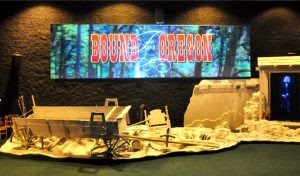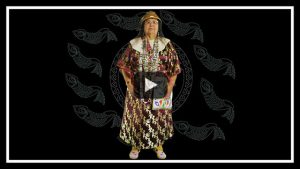Thank you for your interest in coming to the End of the Oregon Trail. Our focus is to give students interactive, hands-on experience, based on the Oregon Department of Education Content Standards. The group activities are designed to give in-depth educational introduction to the Oregon Trail experience. These activities are special programs separate from the general admission programming. Library Cultural Passes cannot be used for group programming.
Interested in coming with a small group, home-school students or scout troop? If you have fewer than 20 children in your group, we recommend that you come for admission through the general public– candle dipping, wagon packing, doll making, journal making, and paper weaving are all included with general admission, free of charge.
How does it work? Three simple steps. Choose your presentation, activities, and then submit your google form!
We want your experience at the End of the Oregon Trail to be as one-of-a-kind as the group you are bringing. Create your own group program by choosing a presentation and your choice of 30-45 minute activities. Groups typically choose 2-3 activities, depending on available time. For example, the general presentation and two activities is one and a half hours, the general presentation and three activities is two – two 1/2 hours, and so on. You can also plan to eat lunch in our on-site picnic shelter and visit our gift shop (preferably in small groups – see Chaperone Instructions after registering), just make sure to note any requests in the comments.
*Please note that larger groups may require a minimum number of activities so that they can be split up into smaller groups during the program. We may also ask that your group be split between multiple dates, especially for large groups, to ensure that students are given enough time/space for each activity. If a group consists of a variety of ages, we may suggest specific activities that will work with the age group. We also highly encourage chaperone and parent participation (Interpreter will give instructions), especially with groups of children that have various ages, so that students have the help that may be needed. When adults are excited, the children will be as well!
Step #1:
Choose a Film: All packages include a general main presentation with a historically clothed interpreter because it’s a great place to start!
General Presentation: In 40 minutes, your interpreter will orient your group with an interactive presentation that includes volunteers and props. This overview of the reasons pioneers traveled, the dangers they faced, and chores they did will prepare your group for the rest of your visit. Ask about customizing your presentation to better suit your group’s age or cover a specific topic.

Bound for Oregon: This 30-minute film traces the true stories of four pioneers making their way to Oregon. Elizabeth Dixon Smith, John Minto, Lucy Henderson, and Joel Palmer came from different backgrounds, and were motivated by different goals, but all faced the hardships and the joys of the Trail. Hear their experiences in their own words – taken from their journals and letters – interwoven with the narration of John McLoughlin, the Father of Oregon.
Oregon’s First People: This 40-minute film tells the story of the Indigenous tribes and, from their point of view, explains the outcome of the arrival of settlers in the Pacific Northwest and Oregon in particular.

Step #2:
Available Activities: Each activity is approximately 30 – 45 minutes (with the exception of candles and butter), and educates students about various important aspects about Oregon and Oregon Trail history.
Candle Dipping & Butter Making: Take part in some hands-on history through this activity. Students participate in real chores children their age would have had during the 1800s and get to keep the candle they make and taste the butter they churn. (Arrangements can be made for gluten allergies; unfortunately, there is no substitution to accommodate those with dairy allergies, who will only be able to participate in churning the butter).
Bison Expedition: This activity helps students discover the wild frontier environment of the Oregon Trail and the animals pioneers saw there. Collect buffalo chips, try out pioneer hunting techniques, and using fun facts about bison, figure out if they were good techniques or not! The largest mammal in North America plays an important role in Oregon Trail history, but also in maintaining the prairie ecosystem to this day.
Chinook Trade Language: This 30-minute activity helps your students face and correct the myths surrounding pioneer relationships with Native Americans. What really happened when these two groups encountered each other on the Trail? Your students can have the opportunity to use the trade language pioneers used to communicate with Native Americans when they needed trade, directions, or help.
Oregon Trail Quest: Explore the Westward Adventure interpretive trail in search of answers to intriguing questions about daily life on the Oregon Trail. This activity encourages students to read the fine print and find the answers they need in signs displaying real pioneer diary quotes. In bad weather, take the quest inside the exhibit with questions focused on the Barlow Road. Younger groups might be interested in a quest which asks students to find and identify native animal tracks in the walkways of our grounds.
Packing the Wagon: How much can a wagon really carry? What food can we pack that won’t go bad? With this 30-minute activity, students are faced with the challenging decisions that faced the Oregon Trail pioneers. Students begin with a list of items and their weights, which they use to decide what they would bring and what they would leave behind, using math to make sure they don’t over-pack and make their wagon too heavy. After completing their list, students will learn from an interpreter what packing choices would have been best, and then actually pack their own true-to-size wagon to see for themselves the struggle that every pioneer had to overcome.
Animal Identification: In this 30 minute indoor activity, an interpreter, using genuine furs and skins, will provide historical and scientific information about the indigenous and invasive animals of Oregon. Students will learn about the wildlife that was important in the fur trade and why, animals people encountered along the trail, and animals they encountered in Oregon once they arrived. Students will also learn about where these animals can be seen today and how they interact with people
To make a reservation, fill out the Reservation form below and a staff member will be in contact with you directly to help customize your visit and provide additional instructions. Please allow at least 3 business days for a response.
Please note that larger groups may require a minimum number of activities so that they can be split up into smaller groups during the program.
***To cancel a reservation, please notify group services at least 10 days in advance in order to allow time for another group to enjoy the experience. Cancellations must be submitted in writing (e-mail, fax or mail). Cancellations become official when CHP has confirmed your request in writing.***
Email any questions to reservations@historicoregoncity.org or call (503) 657-9336.
We look forward to seeing you!
(Adult and Senior Group reservations are available here.)